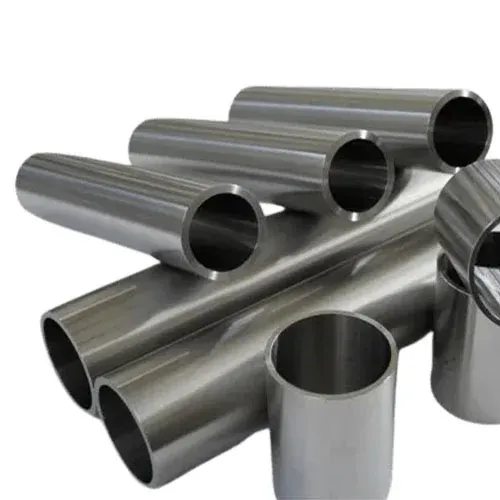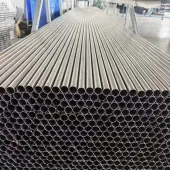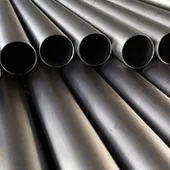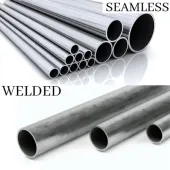
Mastering Fabrication: A Practical Guide to Working with Titanium Tubes
Fabricating titanium tubes requires specific techniques to preserve their unique properties. Unlike working with solid rods, the hollow nature of tubes introduces challenges like kinking during bending and the need for internal weld purging. Following best practices is key to a successful outcome.
This guide covers the essential fabrication techniques for titanium tubes.
1. The Golden Rule: Absolute Cleanliness
This rule cannot be overstated. Before any heating operation (bending, welding), the tube must be perfectly clean.
- Degrease Thoroughly: Use a solvent like acetone or isopropyl alcohol to remove all oils, grease, and cutting fluids, both inside and out.
- Wear Clean Gloves: Handle cleaned tubes only with new, lint-free gloves to prevent contamination from fingerprints.
2. Cutting Titanium Tubes
Achieving a clean, square cut is the first step in quality fabrication.
- Use Sharp Tools: Whether using a lathe, cold saw, or abrasive cutter, sharp blades and wheels are essential to minimize burrs.
- Deburr Meticulously: After cutting, carefully remove all burrs from the inside and outside edges. Burrs can disrupt fluid flow and create stress points.
3. Bending: The Art of Avoiding Kinks
Bending tubes without collapsing or kinking them is a critical skill.
- Mandrel Bending is Key: For tight-radius, high-quality bends, a mandrel bender is essential. The internal mandrel supports the tube from the inside, preventing it from flattening or kinking.
- Account for Springback: Titanium has significant springback. The tube must be bent past the desired angle, as it will partially spring back to its final shape.
- Use Proper Lubrication: Lubricating the tube and bending dies reduces friction and helps ensure a smooth, uniform bend.
4. Welding: The Importance of the Internal Purge
Welding titanium tubes requires complete protection from the atmosphere, both inside and out.
- Orbital Welding: For high-purity, repeatable welds (common in aerospace and semiconductor industries), automated orbital welding is the preferred method.
- Complete Gas Shielding: In addition to shielding the outside of the weld with a TIG torch’s gas lens, you MUST purge the inside of the tube with argon gas. This is called a “back purge.” Without it, the inside of the weld will be contaminated and brittle.
- Purge Dams: Use temporary, dissolvable, or removable “dams” inside the tube to contain the argon gas at the weld area, ensuring an effective and gas-efficient purge.
- Weld Color Check: A successful weld will be shiny silver or a light straw color. Blue, gray, or white colors indicate contamination and a failed weld.
Fabricating for Success: Working with titanium tubes is a precision process. By prioritizing cleanliness and using the correct techniques for cutting, bending, and especially welding, you can harness the full potential of this advanced material for any application.
Quick Contact
Related Products
-

Titanium Tubes
Titanium Tubes

